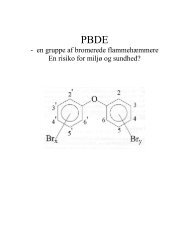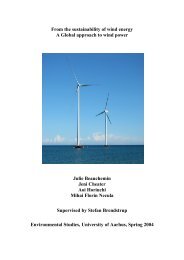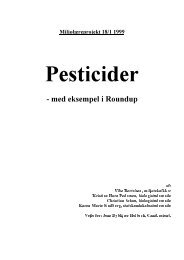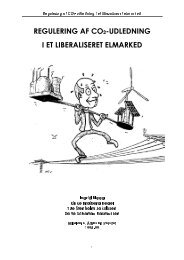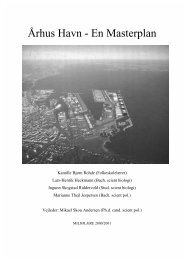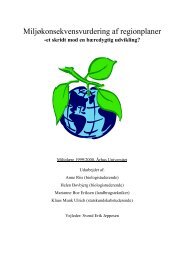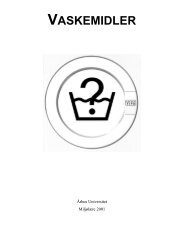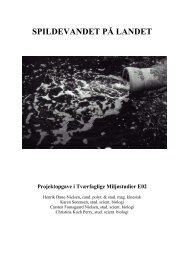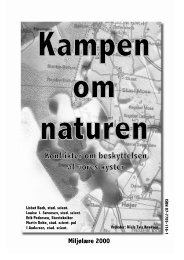University of Aarhus ECOTOURISM AS A WAY TO PROTECT ...
University of Aarhus ECOTOURISM AS A WAY TO PROTECT ...
University of Aarhus ECOTOURISM AS A WAY TO PROTECT ...
Create successful ePaper yourself
Turn your PDF publications into a flip-book with our unique Google optimized e-Paper software.
Ecotourism as a sustainable way to protect nature<br />
Figure 2: Branches <strong>of</strong> tourism (Mieczkowski, 1995)<br />
2.1.2. Different kinds <strong>of</strong> tourism<br />
• Mass tourism<br />
This part <strong>of</strong> tourism is a leisure-oriented type <strong>of</strong>fering the highest comfort<br />
and convenience level regardless <strong>of</strong> any environmental effects. A typical<br />
example <strong>of</strong> this type is the classic "3S" vacation focussing on sea, sun and sand<br />
(Weaver, 2001). The high popularity <strong>of</strong> this type leads to high concentrations <strong>of</strong><br />
people in relatively small spaces, that is why it is called mass tourism.<br />
• Alternative tourism<br />
The alternative types <strong>of</strong> tourism are facing mass tourism from the opposite<br />
point <strong>of</strong> view. Small groups <strong>of</strong> "interested" people enjoy the close contact with<br />
nature. But many subdivisions are possible within this group.<br />
+ Wildlife tourism: "involves travel to observe animals like birds, fish and<br />
mammals in their native habitat" (Honey, 1999). This includes the consumptive<br />
and non-consumptive use <strong>of</strong> wild animals. “It may be high volume mass tourism<br />
or low volume/low impact tourism, generate high economic returns or low<br />
economic returns, be sustainable or unsustainable, domestic or international, and<br />
based on day visits or longer stays” (Roe, 1997).<br />
10




